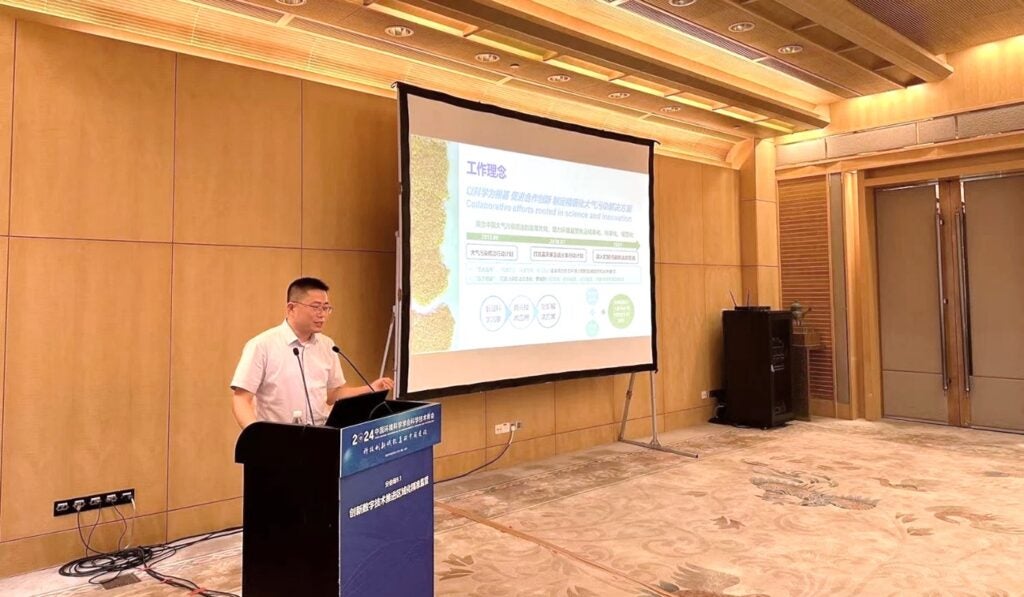
What’s New: EDF and its partners are currently testing the first localized version of Air Tracker for efficiency in China, enabling officials in the pilot city of Jinan to track local air pollution with great precision. Qin Hu, EDF’s Vice President and Chief Representative of the Beijing Office, gave an update on the tool late last month during a keynote speech at the 2024 Chinese Society for Environmental Sciences Annual Conference on Environmental Science and Technology in Wuhan, Hubei. The two-day conference spanned 57 sub-forums and explored the findings of 700 academic reports.
Qin Hu had the opportunity to present learnings to a wide range of experts and policymakers, including the head of China’s Ministry of Ecology and Environment’s Bureau of Ecological and Environmental Enforcement, who gave opening remarks.
What is Air Tracker? Air Tracker is an online tool created by EDF in 2022 that helps users learn more about the air they breathe and see where it’s coming from. Air Tracker runs on real-time, trusted scientific models — combining air quality and weather forecasting data to track pollution’s path. It’s active in several cities across the United States. Last year, EDF teamed up with partners at Tsinghua University to adapt Air Tracker’s technology for use in China, adding new capabilities.
Why it matters: EDF has partnered with the city of Jinan since last year to apply the localized Air Tracker tool to the city’s air quality monitoring system, enabling users to review monitoring data from any historical period—and in real time—to identify pollution hotspots. This tool allows inspection officers to analyze pollution based on contribution rates, increasing their ability to identify sources.
After the conference, Qin Hu was interviewed by Hu Bei Satellite TV, where he emphasized the importance of strengthening data collection and standards to advancing China’s green transition: “After the data is collected, it needs to be standardized and made consistent. It’s not just about the air pollution data itself, but also about integrating related economic and social development data, as well as energy-related data, to identify and support future adjustments to the economic structure.”
What’s next: EDF and Jinan officials plan to follow-up on their work in Jinan through site visits and discussions on future collaboration opportunities. EDF’s China air quality team also plans to use its lessons learned in Jinan to help expand the localized Air Tracker model to more cities around the world.
Visit the following links to learn more about EDF’s air quality work in Jinan and Cangzhou and explore EDF’s main Air Tracker tool here.
